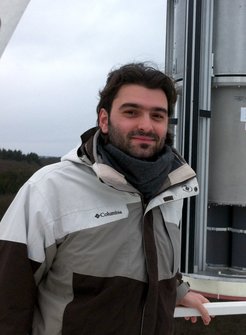Vassilis Karamanavis (2012-15)

Vassilis Karamanavis, March 2015
© V. Karamanavis (MPIfR)

Left: Multi-frequency radio light curves of PKS 1502+106 from the F-GAMMA program. Right: VLBI maps of PKS 1502+106 at 86 GHz (top), 43 GHz (middle), 15 GHz (bottom).
V. Karamanavis (MPIfR)
Note: After a successful postdoctoral period at the MPI für Radioastronomie, Dr. Karamanavis joined the Fraunhofer-Institut für Hochfrequenzphysik und Radartechnik FHR in Wachtberg near Bonn in Spring 2017.

